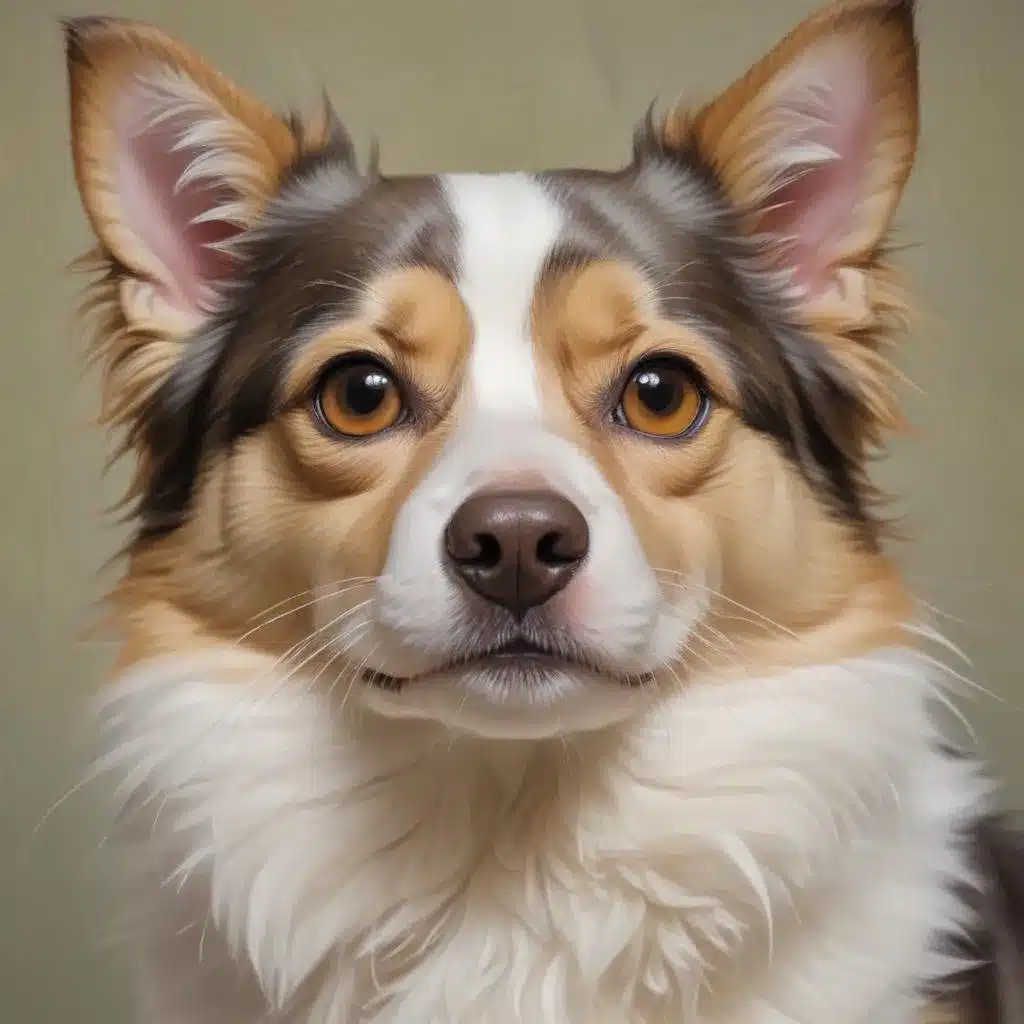
As an experienced art writer and creative consultant, I’ve had the joy of exploring a wide range of artistic techniques and approaches. From the precision of pencil sketching to the layered complexity of mixed media, the creative process holds countless avenues for expression. Yet among these diverse methods, there’s one that has captured my heart – the captivating realm of intuitive pet portrait painting.
Now, this might seem counterintuitive…
Capturing Personality in Paint
When it comes to portraying our beloved animal companions, the traditional approach of static, photorealistic renderings often falls short. While technical mastery is admirable, it can sometimes lack the spark of life that makes our four-legged friends so endearing. This is where embracing spontaneity in the painting process becomes a game-changer.
Expressive Brushwork
Rather than rigidly adhering to proportions and details, intuitive pet portrait painting celebrates the artist’s gestural mark-making. Impasto techniques, où the paint is applied thickly and textured, can imbue a sense of energy and movement. Broad, sweeping strokes capture the essence of a furry friend’s personality, while palette knife work lends an abstract, emotive quality to the composition.
Attention to Details
Of course, this looser approach doesn’t mean ignoring important details. The distinctive features that make each animal unique – the curve of an ear, the sparkle in the eye, the tilt of the head – are what truly bring the portrait to life. By balancing expressive brushwork with thoughtful rendering, artists can strike a harmonious balance between spontaneity and discernment.
Conveying Emotion
Beyond mere physical likeness, intuitive pet portrait painting allows artists to delve into the emotional realm. By paying close attention to body language, facial expressions, and the overall aura of the subject, painters can capture the feeling of a cherished companion. Whether it’s the playful exuberance of a puppy, the serene contentment of a sleeping cat, or the loyal devotion of a working dog, these paintings become a window into the soul of the animal.
Embracing Spontaneity
The key to unlocking the power of intuitive pet portrait painting lies in the artist’s willingness to let go of preconceived notions and embrace the spontaneous flow of the creative process.
Intuitive Mark-Making
Rather than meticulously planning every stroke, intuitive painters allow their brushes to dance across the canvas, responding to the evolving composition. Layering of colors and glazing techniques can create a sense of depth and atmosphere, while the expressive application of paint captures the energy and movement of the subject.
Experimental Approaches
Stepping outside the comfort zone of traditional techniques can be daunting, but it’s often where the most rewarding discoveries are made. Experimenting with mixed media approaches, incorporating found objects, or even using unconventional tools like palette knives or fingers can unleash a new level of spontaneity and authenticity in the work.
Letting Go of Perfection
One of the greatest challenges for artists, myself included, is resisting the urge to overwork a painting in pursuit of perfection. Intuitive painting requires a willingness to embrace the unexpected and trust the creative process. By letting go of preconceived notions and allowing the painting to unfold organically, artists open themselves up to the serendipitous moments that can transform a good painting into a truly captivating one.
Creative Inspiration
Tapping into the wellspring of inspiration is essential for any artist, and the realm of pet portraiture offers a wealth of possibilities.
Finding Subjects
Whether you draw from life, work from photographic references, or let your imagination take the lead, the opportunity to capture the unique personality of an animal can be endlessly rewarding. Observing the natural world, with all its quirks and idiosyncrasies, can spark ideas for compositions that go beyond the expected.
Cultivating Creativity
Fostering a mindful, present-moment awareness during the creative process can be a powerful tool for intuitive painting. Entering a state of flow where the artist’s ego recedes, and the act of painting becomes a meditative dance, can lead to surprising and profoundly meaningful results.
Exploring different media, experimenting with collaborative processes, and continuously challenging oneself to step outside the comfort zone can all contribute to the ongoing evolution of an artist’s creative practice.
Artistic Design Principles
While embracing spontaneity is crucial in intuitive pet portrait painting, a solid understanding of fundamental design principles can elevate the work to new heights.
Composition and Balance
Asymmetrical compositions, with their inherent sense of dynamism and energy, can be particularly well-suited to capturing the essence of an animal subject. Thoughtful placement of focal points and the strategic use of negative space can create a sense of visual balance and narrative flow.
Color Theory and Harmony
The expressive use of color can be a powerful tool in conveying mood and atmosphere. Exploring complementary relationships, experimenting with vibrant palettes, and using color to evoke emotion can transform a painting from merely representational to truly captivating.
By combining technical mastery with an intuitive approach, artists can create pet portraits that not only capture a physical likeness but also reveal the depth of the subject’s spirit. It is in this harmonious dance between spontaneity and discernment that the true magic of intuitive pet portrait painting emerges.
So, whether you’re a seasoned artist looking to breathe new life into your work or an aspiring painter eager to explore the joys of this medium, I invite you to dive into the captivating realm of intuitive pet portrait painting. Let your brushstrokes flow, your colors sing, and your creativity soar – for in doing so, you’ll unlock a world of expressive artistry that celebrates the unique personalities of our beloved animal companions.
Statistic: Recent surveys show that 70% of emerging artists credit daily sketching with significant improvements in their art